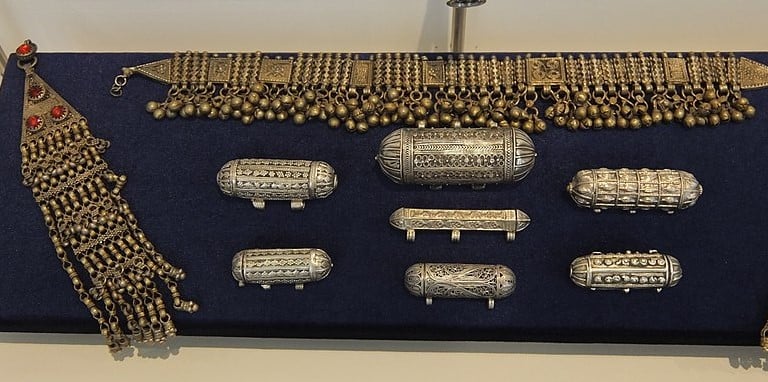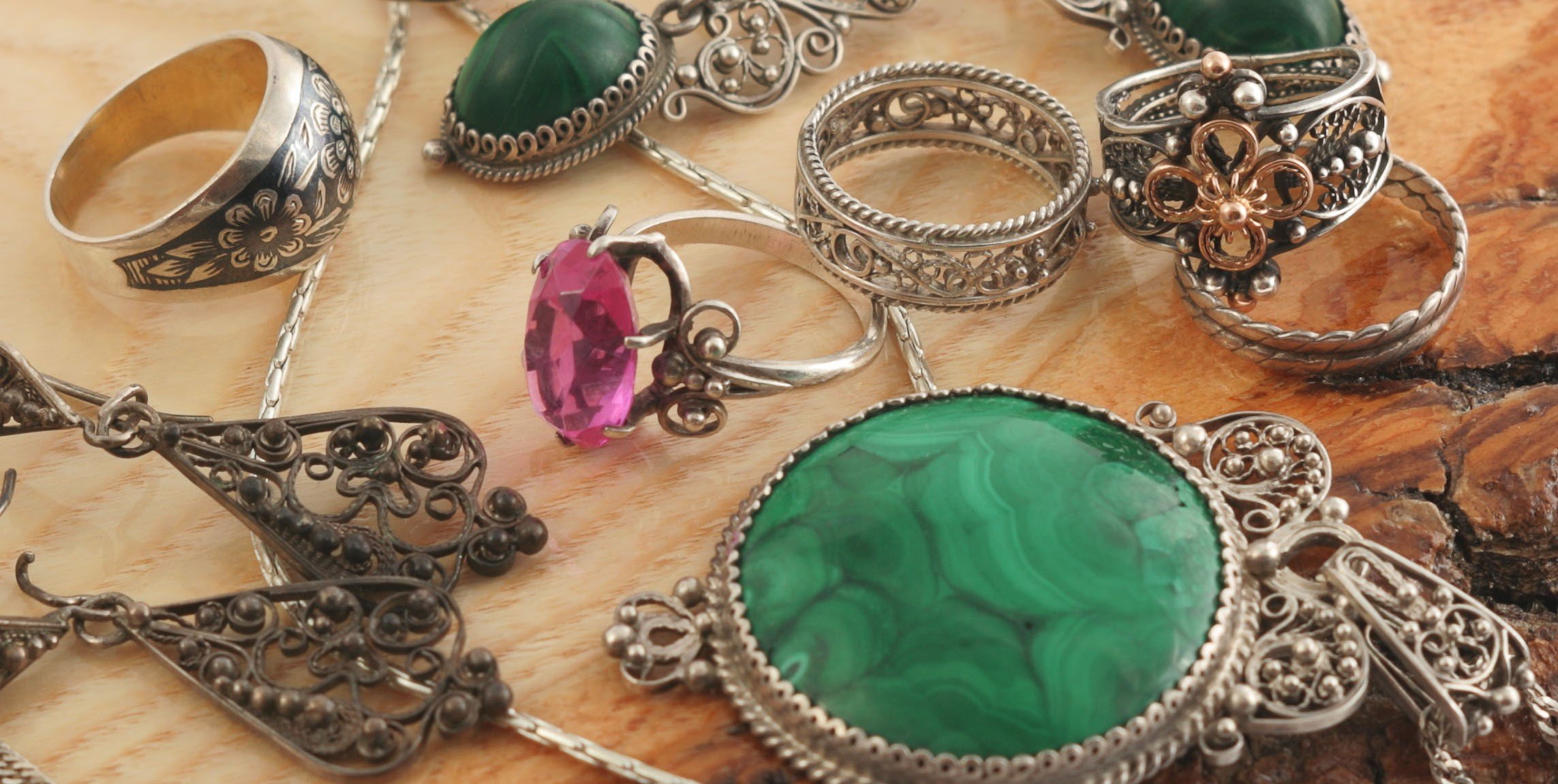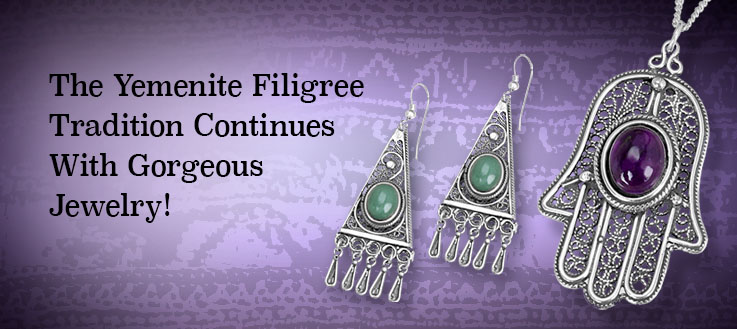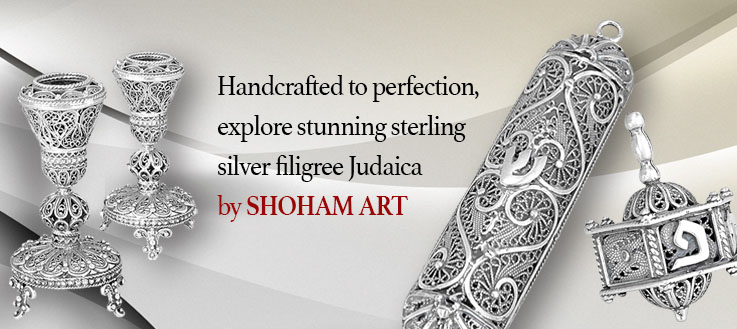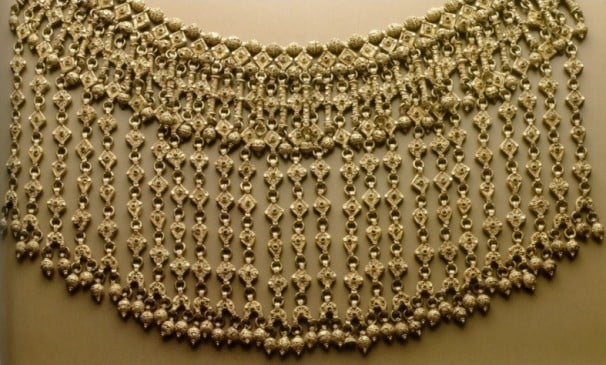
A traditional Jewish Yemenite necklace from the late 19th or early 20th century made from silver gilt filigree (Photo: Pierre-Alain Ferrazzini for The Israel Museum/Wikimedia Commons license CC BY-SA 4.0)
Yemen had been a silver-making powerhouse in the 18th and 19th centuries, and the craft was almost exclusively done by Jews. Yemenite Jewish silversmithing families developed gorgeous methods for making silver jewelry, art, and other crafts, most notably using intricate detailing like filigree and adding colorful precious stones.
The methods were passed down from generation to generation, and were so prized in Yemenite society that some of these Jewish silversmiths were even employed by Yemenite royalty!
Jewish Yemenite silversmiths started immigrating to the Land of Israel in the late 1800's and early 1900's, taking their craft with them. The Bezalel Academy of Arts and Design in Jerusalem even had its own silver-making program in the early 20th century, employing many Yemenite Jewish artists.
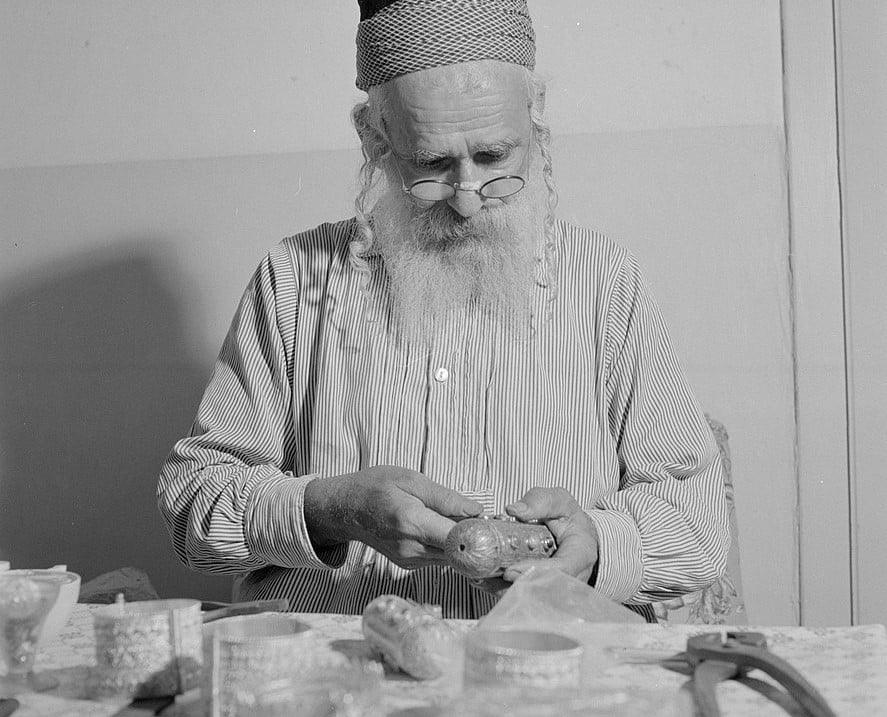
A Jewish-Yemenite artist creating traditional Yemenite silver filigree items in Jerusalem in 1964 (Photo: Willem van de Poll)
Almost the entire Jewish community of Yemen left for Israel between June 1949 and September 1950 to escape persecution, including the remaining Jewish silversmiths. Some Muslims temporarily stepped in to fill the gap in Yemen's silver industry; however, around this same time, imported and cheaper mass-produced gold and silver jewelry became more popular in Yemen, and the demand for traditional silversmithing in the country eventually disappeared.
In Israel, meanwhile, the Yemenite Jewish silver artists continued practicing their craft and passing on their traditional methods, and even began incorporating their distinct filigree designs into Judaica and other distinctly Jewish designs.
